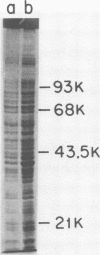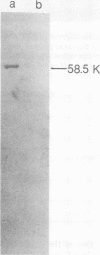Abstract
Many vaccines containing somatic and secreted antigens of Pseudomonas aeruginosa have been reported. The vaccines containing lipopolysaccharide have been found to provide type-specific protection, but the endotoxin content of these vaccines does not make it feasible to use them in patients who are already debilitated. Outer membrane proteins could be effective as vaccines, as they can be purified free of lipopolysaccharide, and also because they are common to all serotypes of P. aeruginosa. To be effective as a vaccine, such proteins must be immunogenic and accessible from the outside of the intact bacterial cell. In this study, we showed that systemic antibodies were produced frequently to two cell envelope proteins with masses of 58,500 and 37,500 daltons and occasionally to 34,000-dalton protein of P. aeruginosa in cystic fibrosis patients with chronic lung infections. In rabbits immunized with whole, fixed cells of P. aeruginosa, antibodies were also produced against the 58,500-dalton proteins. Thus, the 58,500-dalton cell envelope protein of P. aeruginosa was the only immunogenic protein that was accessible to the immune system when whole, fixed cells were used for immunization. These serum antibodies did not protect the cystic fibrosis patients against further lung infection with P. aeruginosa.
Full text
PDF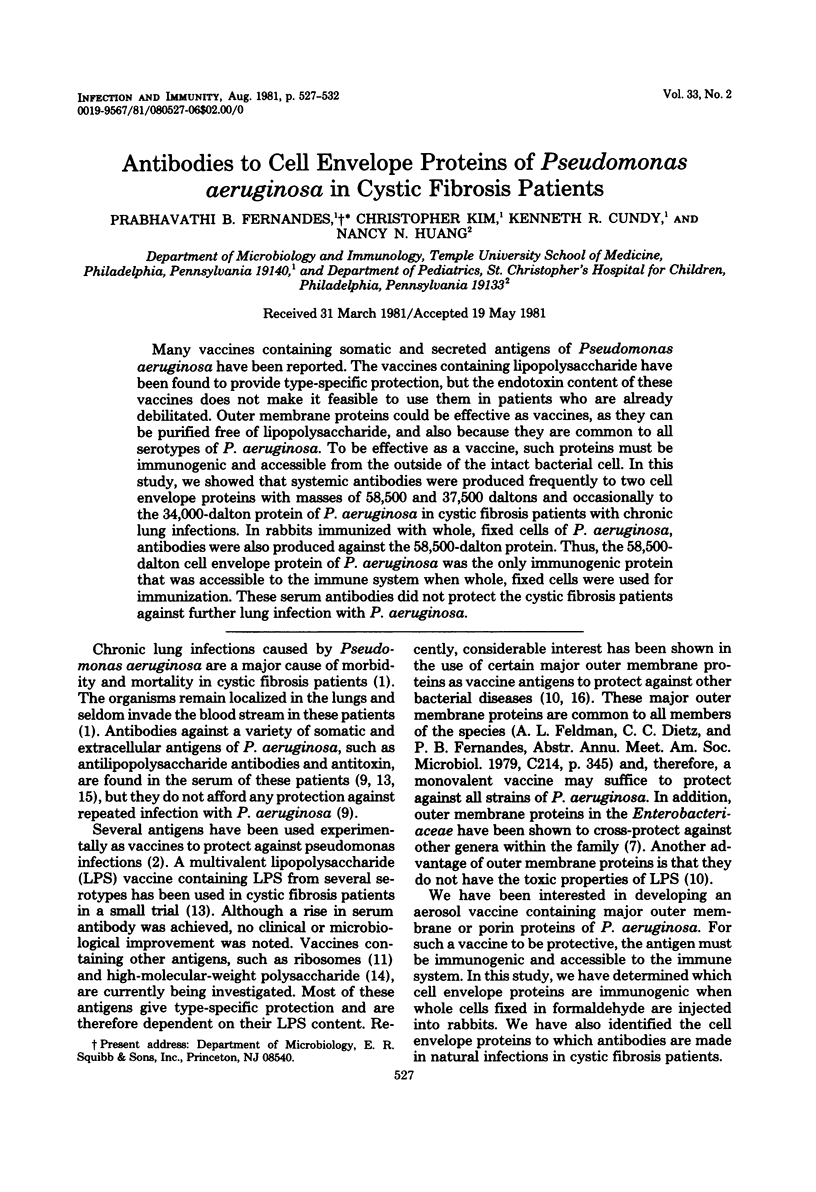
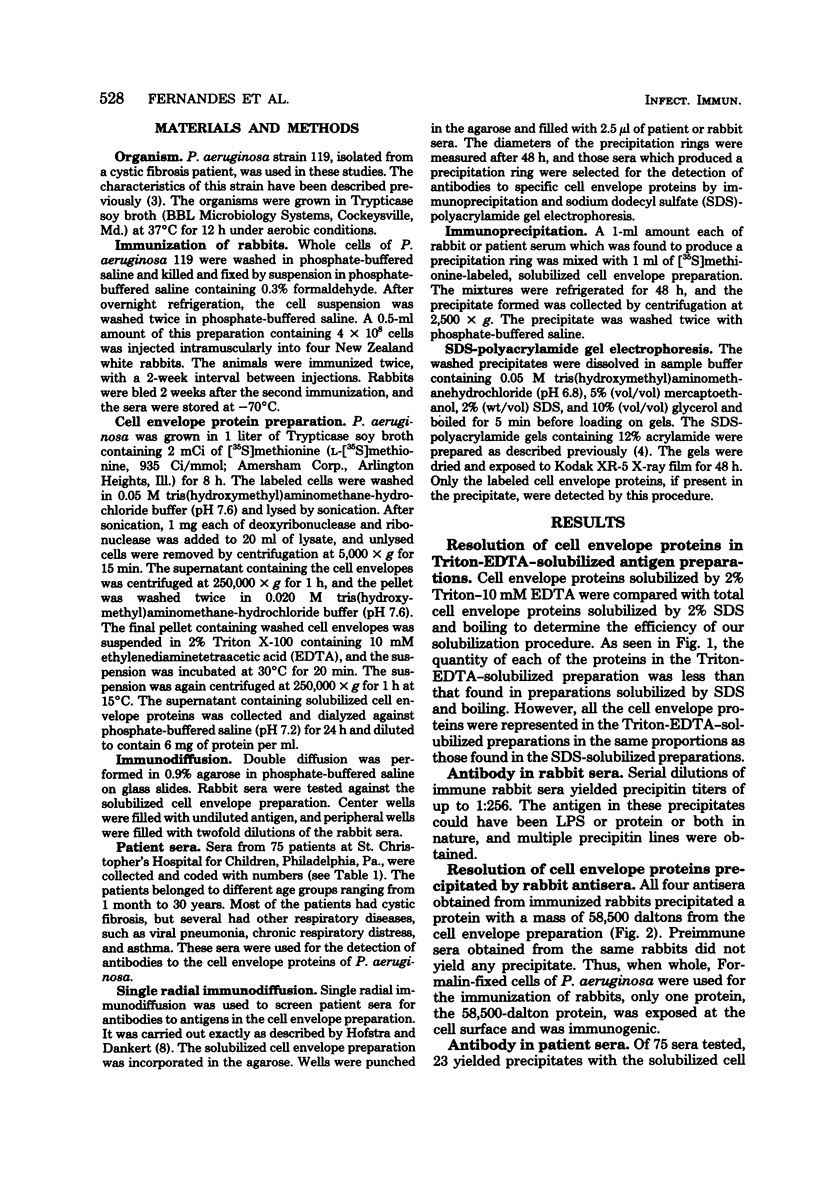
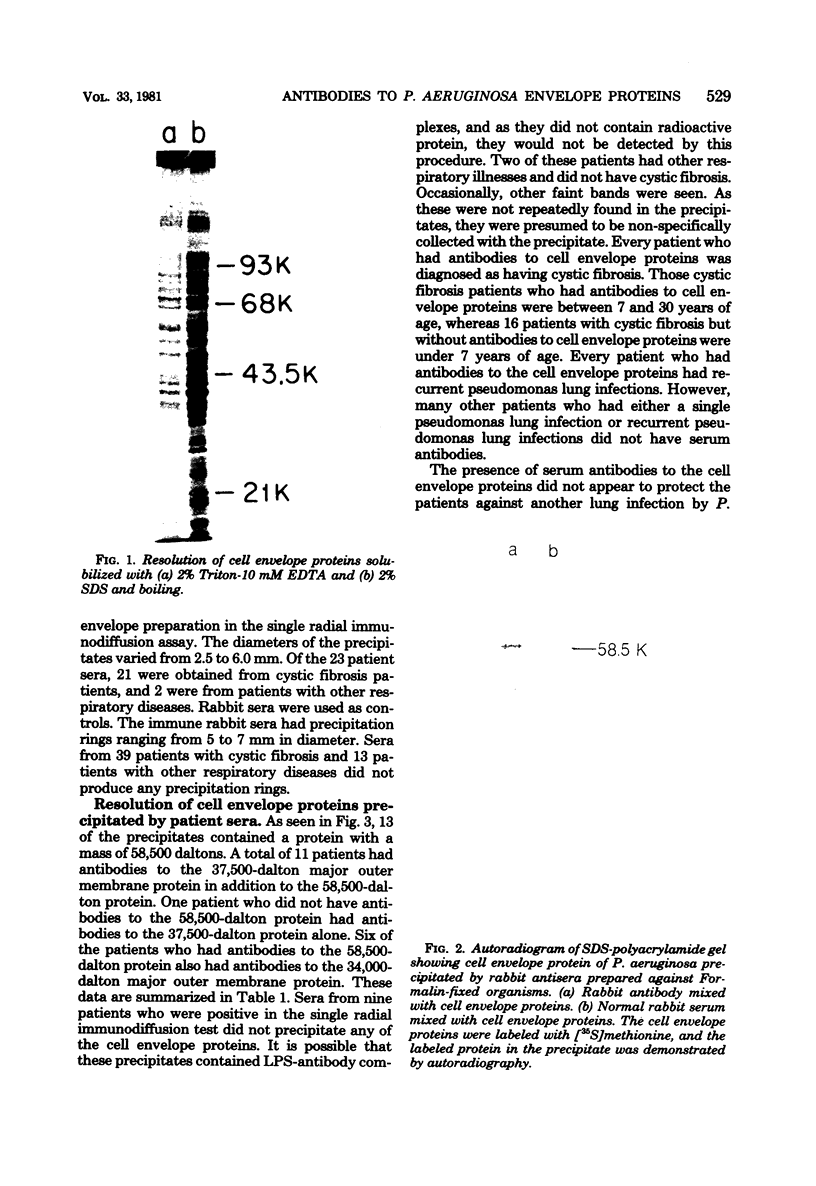
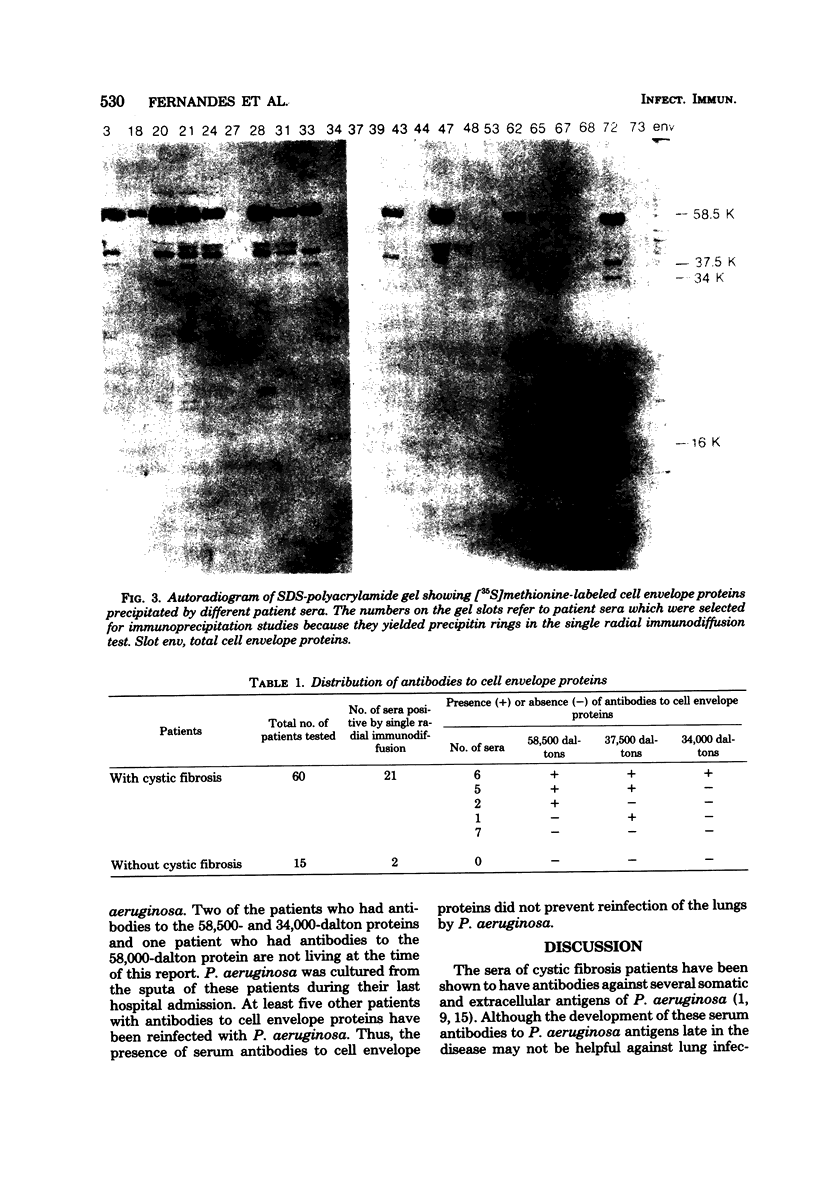
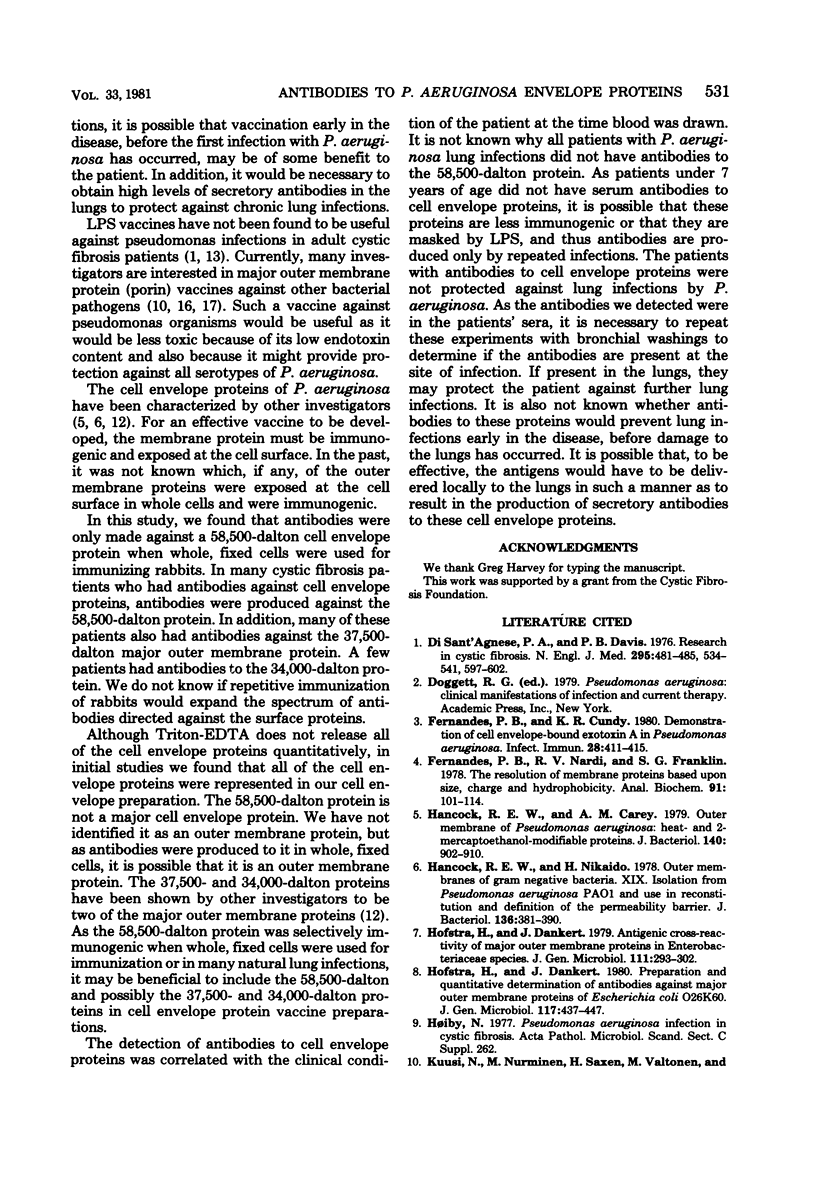
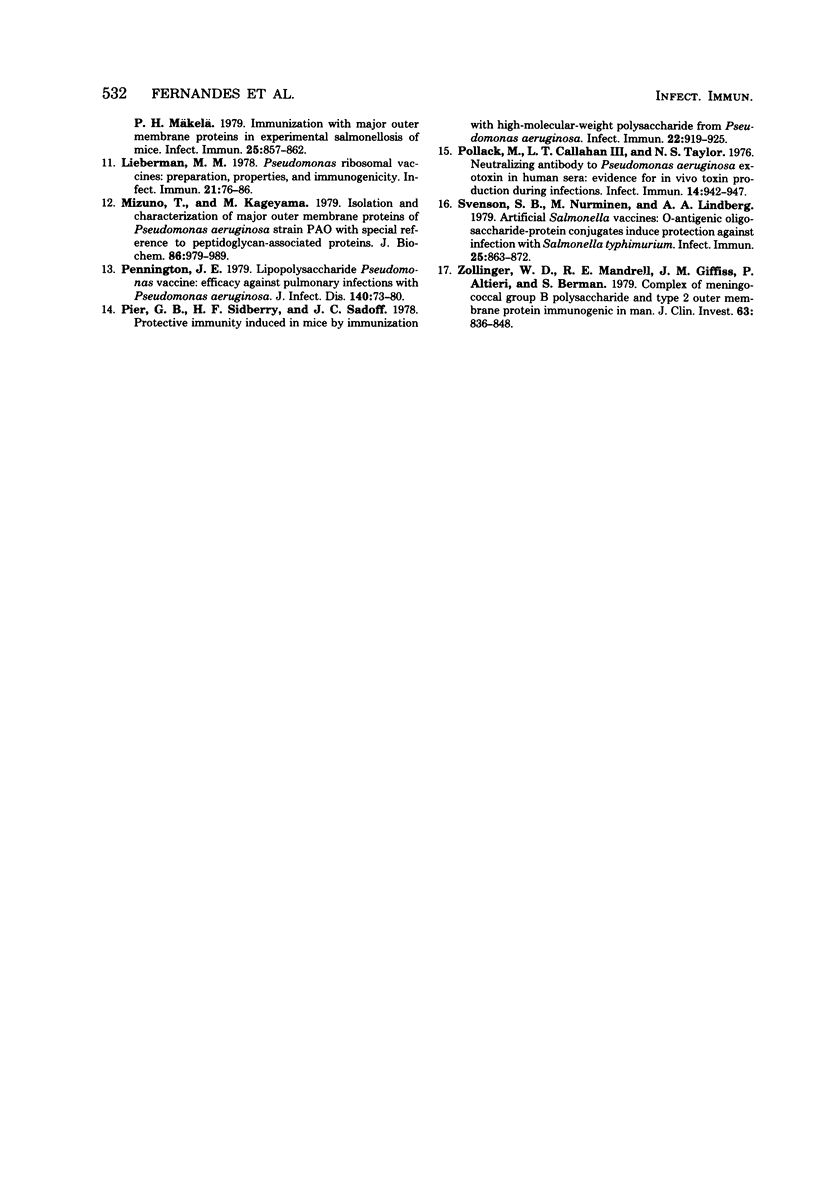
Images in this article
Selected References
These references are in PubMed. This may not be the complete list of references from this article.
- Di Sant'Agnese P. A., Davis P. B. Research in cystic fibrosis (first of three parts). N Engl J Med. 1976 Aug 26;295(9):481–485. doi: 10.1056/NEJM197608262950905. [DOI] [PubMed] [Google Scholar]
- Fernandes P. B., Cundy K. R. Demonstration of cell envelope-bound exotoxin A in Pseudomonas aeruginosa. Infect Immun. 1980 May;28(2):411–416. doi: 10.1128/iai.28.2.411-416.1980. [DOI] [PMC free article] [PubMed] [Google Scholar]
- Fernandes P. B., Nardi R. V., Franklin S. G. The resolution of membrane proteins based upon size, charge, and hydrophobicity. Anal Biochem. 1978 Nov;91(1):101–114. doi: 10.1016/0003-2697(78)90820-5. [DOI] [PubMed] [Google Scholar]
- Hancock R. E., Carey A. M. Outer membrane of Pseudomonas aeruginosa: heat- 2-mercaptoethanol-modifiable proteins. J Bacteriol. 1979 Dec;140(3):902–910. doi: 10.1128/jb.140.3.902-910.1979. [DOI] [PMC free article] [PubMed] [Google Scholar]
- Hancock R. E., Nikaido H. Outer membranes of gram-negative bacteria. XIX. Isolation from Pseudomonas aeruginosa PAO1 and use in reconstitution and definition of the permeability barrier. J Bacteriol. 1978 Oct;136(1):381–390. doi: 10.1128/jb.136.1.381-390.1978. [DOI] [PMC free article] [PubMed] [Google Scholar]
- Hofstra H., Dankert J. Antigenic cross-reactivity of major outer membrane proteins in enterobacteriaceae species. J Gen Microbiol. 1979 Apr;111(2):293–302. doi: 10.1099/00221287-111-2-293. [DOI] [PubMed] [Google Scholar]
- Hofstra H., Dankert J. Preparation and quantitative determination of antibodies against major outer mambranes proteins of Escherichia coli O26 K60. J Gen Microbiol. 1980 Apr;117(2):437–447. doi: 10.1099/00221287-117-2-437. [DOI] [PubMed] [Google Scholar]
- Lieberman M. M. Pseudomonas ribosomal vaccines: preparation, properties, and immunogenicity. Infect Immun. 1978 Jul;21(1):76–86. doi: 10.1128/iai.21.1.76-86.1978. [DOI] [PMC free article] [PubMed] [Google Scholar]
- Mizuno T., Kageyama M. Isolation and characterization of major outer membrane proteins of Pseudomonas aeruginosa strain PAO with special reference to peptidoglycan-associated protein. J Biochem. 1979 Oct;86(4):979–989. doi: 10.1093/oxfordjournals.jbchem.a132630. [DOI] [PubMed] [Google Scholar]
- Pennington J. E. Lipopolysaccharide pseudomonas vaccine: efficacy against pulmonary infection with Pseudomonas aeruginosa. J Infect Dis. 1979 Jul;140(1):73–80. doi: 10.1093/infdis/140.1.73. [DOI] [PubMed] [Google Scholar]
- Pier G. B., Sidberry H. F., Sadoff J. C. Protective immunity induced in mice by immunization with high-molecular-weight polysaccharide from Pseudomonas aeruginosa. Infect Immun. 1978 Dec;22(3):919–925. doi: 10.1128/iai.22.3.919-925.1978. [DOI] [PMC free article] [PubMed] [Google Scholar]
- Pollack M., Callahan L. T., 3rd, Taylor N. S. Neutralizing antibody to Pseudomonas aeruginosa exotoxin in human sera: evidence for in vivo toxin production during infection. Infect Immun. 1976 Oct;14(4):942–947. doi: 10.1128/iai.14.4.942-947.1976. [DOI] [PMC free article] [PubMed] [Google Scholar]
- Svenson S. B., Nurminen M., Lindberg A. A. Artificial Salmonella vaccines: O-antigenic oligosaccharide-protein conjugates induce protection against infection with Salmonella typhimurium. Infect Immun. 1979 Sep;25(3):863–872. doi: 10.1128/iai.25.3.863-872.1979. [DOI] [PMC free article] [PubMed] [Google Scholar]
- Zollinger W. D., Mandrell R. E., Griffiss J. M., Altieri P., Berman S. Complex of meningococcal group B polysaccharide and type 2 outer membrane protein immunogenic in man. J Clin Invest. 1979 May;63(5):836–848. doi: 10.1172/JCI109383. [DOI] [PMC free article] [PubMed] [Google Scholar]



